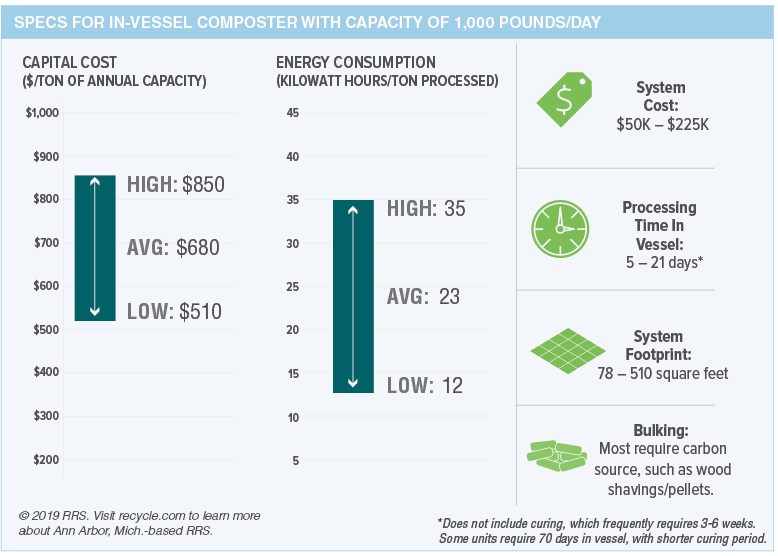Commercial food waste generators – malls, universities and hospitals, for instance – are increasingly interested in diverting food waste from landfills. Those entities often commission a third party to collect the material and deliver it to an off-site composting or anaerobic digestion facility. However, another option is to implement an on-site system, which can reduce or even eliminate collection trips.
Before making that move, however, a generator will want to know the facts on equipment, costs, energy use and more. This edition of Data Corner dives into those details.
If a generator wants to fully manage its food waste on-site, composting is the preferred method and will involve either designing a custom system or implementing an “off-the-shelf” in-vessel composter. These are small-scale, pre-fabricated units designed to be administered on-site and convert organic waste into a material that can be finished into various grades of valuable compost.
In-vessel composter technologies come in a variety of sizes, some that handle as little as 100 pounds per day and some with the capability to process in excess of 10 tons daily.
Regardless of size, most in-vessel composters will utilize one of the following fundamental designs:
- Rotary Drum – A cylindrical drum is rotated on an axis by a motor, and that movement mixes together the feedstock. The concept is similar to a cement mixer, utilizing gravity to blend material in the unit.
- Horizontal Auger – Feedstock is loaded into one end of a long drum, and a central mixing shaft blends material throughout the drum while moving it from the point of loading toward a far end where it is removed.
- Vertical Auger – Material is loaded into one end of a long horizontal container while a vertically oriented auger blends material, slowly moving it in a perpendicular path toward the far end of the container where it is periodically expelled into a container.
System costs will vary depending upon technology type as well as installation location and difficulty.
Costs are also affected by add-on components, including shredders, hoppers, bin/cart-lifts, conveyors, screens, heaters, moisture control, and other advanced options.

This month’s edition of Data Corner provided by recycling consultancy RRS.
This article appeared in the March 2019 issue of Resource Recycling. Subscribe today for access to all print content.

